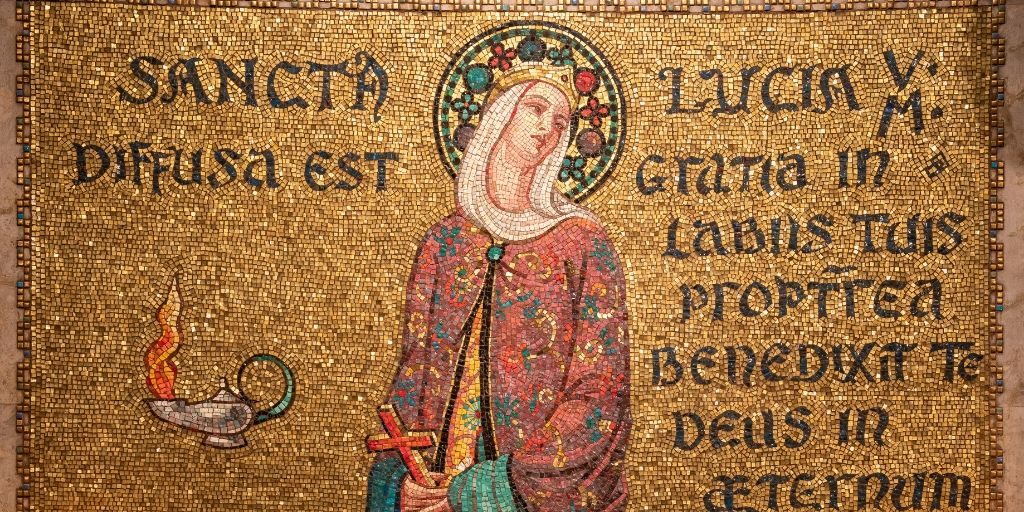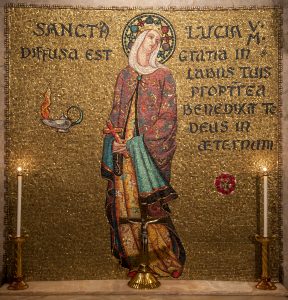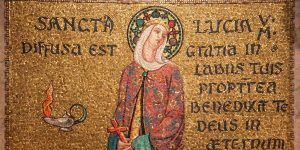
Though her story is tragic, the legacy of St. Lucy lives on in a celebration of hope and light, observed on December 13. In Scandinavian countries, the celebration of St. Lucy’s Day marks the beginning of the Christmas season, celebrating the coming of light in the darkness.
The Life of St. Lucy
Born in Sicily, St. Lucy converted to Christianity after her blind mother recovered her eyesight. She was martyred at a young age under the persecution of the Emperor Diocletian. The exact reason is uncertain, but tradition holds that a spurned suitor reported her to the governor, who had her killed for her faith. Another tradition holds that, as part of her torture, she was blinded, but her eyesight was miraculously restored. For this reason, she is the patron saint for eyesight.

The Tradition of St. Lucy’s Day
In Sweden and other Scandinavian countries, the feast of St. Lucy, or Saint Lucia, is commemorated with each town appointing a girl to be St. Lucy. The girl wears a white dress with a red sash and a lighted wreath on her head, parading through the streets followed by other children. In families, the eldest daughter typically dresses as St. Lucy and serves coffee, cookies, and saffron buns to the family.
The Symbolism of St. Lucy’s Day: A Day of Light
The white robe symbolizes St. Lucy’s virginity, and the red sash symbolizes her martyrdom. The wreath of candles comes from a tradition of St. Lucy bringing food to Christians hiding in the catacombs: in order to have her hands free to carry more provisions, she wore a lighted wreath of candles, bringing light into the darkness of the catacombs. The name Lucy also means light – from the Latin “lux.” For these reasons, and the day’s proximity to the winter solstice in the Julian calendar, the Feast of St. Lucy has long been associated with light. As the beginning of the Christmas season in Scandinavia, St. Lucy’s Day is especially significant in the long, dark days of the north, symbolizing the coming of light in the darkness.
The Greatest Light of All
As we reflect on light this St. Lucy’s Day, let us draw our thoughts toward the greatest light of all – our Lord Jesus Christ. We celebrate his coming, which was foretold in the Old Testament:
The people who walked in darkness
have seen a great light;
Upon those who lived in a land of gloom
a light has shone. – Isaiah 9:1
The Gospel of John affirms this:
[T]hrough him was life,
and this life was the light of the human race;
the light shines in the darkness,
and the darkness has not overcome it. – John 1:4-5
Jesus himself declares himself to be our light:
Jesus spoke to them again, saying, “I am the light of the world. Whoever follows me will not walk in darkness, but will have the light of life.” – John 8:12
Entering the Christmas season, we celebrate Christ, who brought light into the dark world and salvation to all who believe. May we reflect his light to those around us, demonstrating to others his goodness and glory.
In the Basilica, St. Lucy is depicted in the St. Lucy Chapel.

